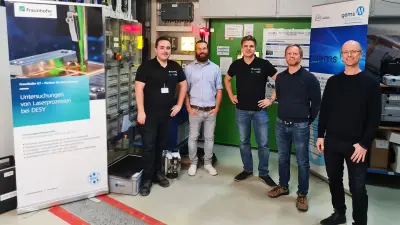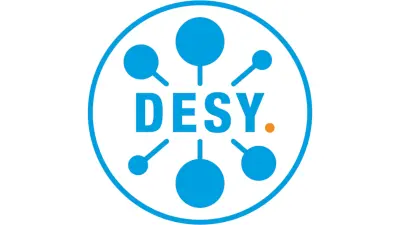Innovative laser welding: making the invisible visible
Bosch Researchers use advanced X-ray technology to study laser welding at the Accelerator Centre DESY

Are the ribs broken or just bruised? A look inside can help: X-rays can help a doctor quickly determine what is wrong with a patient and determine the best course of treatment.
Bosch Research also wants to know exactly what is going on — what happens for example during welding inside a component? We want to understand which principles of action cause critical defects in welded seams. Thank to this know-how, Bosch is able to use lasers to produce high-quality welded joints in a wide range of products. This is particularly valuable for electrified mobility with products such as electric motors or power electronics. For this purpose, the researchers from the EMY-069 project "Adapted Laser Processing for E-Mobility", Andreas Heider, Christoph Bantel, and Roland Gauch, are using X-ray radiation at the Accelerator Centre DESY to make the invisible visible.
DESY is a research center of the German Helmholtz Association and is one of the world's leading accelerator centers. With DESY's large-scale facilities, researchers explore the microcosm — from elementary particles to the behavior of novel nanomaterials to processes occurring between biomolecules. The complex experimental setup and organization required for this was realized by the Fraunhofer Institute together with DESY. Only by sharing the experimental facility with the Fraunhofer Institute for Laser Technology (ILT), the Institute for Beam Tools at the University of Stuttgart (IFSW) and the Bavarian Laser Center (BLZ) was it possible to carry out these experiments.
The cooperation allowed them to observe what happens in the component during laser beam welding. Seam defects that occur during and after welding frequently result in a defective joint, or in a worst-case scenario, failure of the component. Knowing the cause of seam defects is therefore crucially important. Welding processes sometimes last only a few thousandths or hundredths of a second. This makes it very difficult to detect seam defects as they occur. Knowledge regarding interaction mechanisms between the laser beam and material is used to design fast and robust processes. This supports the production of reliable products with great value for the money.
Classic examination methods such as microsections only show the result of the weld seam after welding. High-speed images only show the process from above. The “view inside the component” using synchrotron X-rays during welding is particularly valuable when it comes to understanding the involved physical mechanisms of action. And this is where DESY comes in: The coherent X-ray radiation generated at DESY´s high-brilliance synchrotron radiation source PETRA III allows a view inside during welding. For the first time ever, metals such as copper could be X-rayed at up to 10,000 frames per second during the experiments. The resolution of the images is as fine as half the thickness of a human hair.
With carefully designed and prepared experiments, specific production-relevant active principles were researched. Of particular interest was the influence of the laser wavelength of new green and blue laser beam sources on process stability. In addition, the physical processes involved in different process strategies, materials and the effect of contaminated surfaces on the welding result could be analyzed and evaluated.
Thanks to this partnership, the experts at Bosch Research were able to observe and analyze what no one had ever seen before. Gaining an understanding of the process results in advantages for Bosch production. The laser-based joining processes thus contribute to a sustainable, innovative and cost-effective manufacturing at Bosch. This will benefit current and future electrified mobility products.
